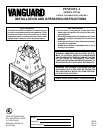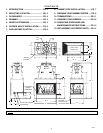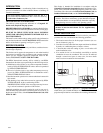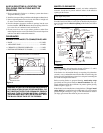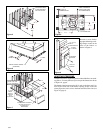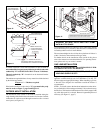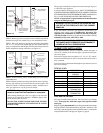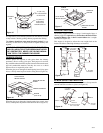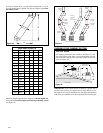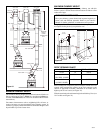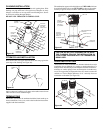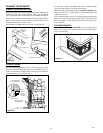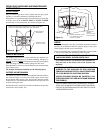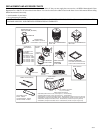Special offers from our partners!

Find Replacement BBQ Parts for 20,308 Models. Repair your BBQ today.

3
55505
Figure 2
INTRODUCTION
Model VPN36 series is a woodburning firebox intended and ap-
proved for installation in either residential homes or buildings of
standard construction.
This wood burning fireplace complies with UL 127 as a
FACTORY BUILT FIREPLACE and is listed and tested by
Underwriters Laboratory Inc.
This model is not for use in mobile homes.
This firebox system requires the utilization of a Vanguard 10"
double-wall, snap-lock flue pipe system.
BRUSHED BRASS GLASS DOORS are standard with this firebox.
Different style doors are offered as optional accessories (see last page).
BE SURE TO CHECK WITH YOUR LOCAL BUILDING
CODES FOR AREA REQUIREMENTS BEFORE INSTALL-
ING THIS FIREBOX.
The model's serial number and any other specific rating information
may be found on the unit in the UL RATING PLATE located at the
interior of the firebox's opening (see Figure 1, page 2).
BEFORE YOU BEGIN
Before beginning the installation of your firebox, read these instruc-
tions through completely.
This firebox and its approved components are safe when installed
and operated according to this installation and operation manual.
Unless you use Vanguard approved components tested for this
firebox, YOU MAY CAUSE A FIRE HAZARD!
The DESA International warranty will be voided by, and DESA
International disclaims any responsibility for the following actions:
A) Modification of the firebox or any of the components manufac-
tured by DESA INTERNATIONAL unless otherwise permitted
by DESA INTERNATIONAL.
B) The use of a firebox insert or any other component part not ap-
proved by DESA INTERNATIONAL in combination with a
DESA INTERNATIONAL firebox.
C) Installation and/or operation in a manner other than instructed in
this manual.
D) The burning of any other fuel not tested or approved by DESA
INTERNATIONAL in this wood-burning firebox.
PROPER INSTALLATION is the most important step in ensur-
ing a safe and continuous operation of this firebox.
Although grounding may not be required by code in your area, it
must be electrically grounded in accordance with local codes or, in
the absence of local codes, with the National Electrical Code, ANS/
NFPA 70-1987.
This firebox is intended for installation in accordance with the
National Fire Protection Association Standard for Chimneys, Fire-
places, Vents, and Solid-Fuel Burning Fireplaces, NFPA 211, and in
accordance with codes such as the BOCA Basic/National Code, the
Standard Mechanical Code, and the Uniform Building Code.
NOTE: Installation and repair should be done by a qualified
installer. The firebox and chimney system should be inspected
and cleaned before use and periodically thereafter especially
during heating season to ensure a safe operating system.
This firebox is not intended to be used as a substitute for a
furnace to heat an entire home. Use for supplementary
heating only.
SELECTING LOCATION
To determine the safest and most efficient location for your firebox,
you must take into consideration the following guidelines:
1. The location must allow for all the proper clearances (see sec-
tion on clearances, page 4).
2. Consider a location where the heat output would not be affected
by drafts, air conditioning ducts, windows or doors.
3. A location that avoids the cutting of joists or roof rafters will
make installation easier.
4. If an outside air kit is to be installed, accessibility to outside
combustion air must be considered. This can also be achieved
through a vented crawl space in some cases, for more details
refer to section on outside air kit installation.
The typical installation for a peninsula is a
projected installation,
which allows you to extend the firebox any distance into the room. A
projection may be ideal for a new addition on an existing, finished wall.



